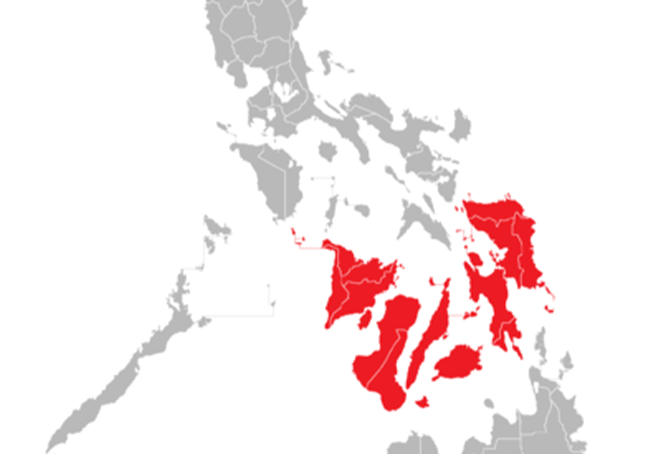Visayas

The Visayas (/vɪˈsaɪəz/ vi-SY-əz), or the Visayan Islands[2] (Cebuano: Kabisay-an, locally [kabiˈsajʔan]; Tagalog: Kabisayaan [kabiˈsɐjaʔan]), are one of the three principal geographical divisions of the Philippines, along with Luzon and Mindanao. Located in the central part of the archipelago, it consists of several islands, primarily surrounding the Visayan Sea, although the Visayas are also considered the northeast extremity of the entire Sulu Sea.[3] Its inhabitants are predominantly the Visayan peoples.
The major islands of the Visayas are Panay, Negros, Cebu, Bohol, Leyte and Samar.[6] The region may also include the provinces of Palawan, Romblon, and Masbate whose populations identify as Visayan and whose languages are more closely related to other Visayan languages than to the major languages of Luzon.
There are three administrative regions in the Visayas: Western Visayas (pop. 7.1 million), Central Visayas (6.8 million) and Eastern Visayas (4.1 million). The Negros Island Region existed from 2015 to 2017, separating Negros Occidental and its capital Bacolod from Western Visayas and Negros Oriental from Central Visayas. The region has been dissolved since.
Visayas region is located in central Philippines, with a total land area of 71,503 km2 (27,607 sq mi). It is consist of several islands, including Samar, Negros, Panay, Leyte, Cebu, Bohol, Guimaras, Biliran, Siquijor, Panaon and Bantayan.
The etymology of Visayas is unknown. The word “Bisaya” was first documented in Spanish sources in reference only to the non-Ati inhabitants of the island of Panay and possibly parts of Negros. They were described by the Spanish as being “white people” with no tattoos. In contrast, the Spaniards called the inhabitants of other Visayan islands as the Pintados (“the painted ones”) in reference to their practice of tattooing their entire bodies. It is unlikely that “Bisaya” was used as a collective endonym by the closely related native Visayans prior to the Spanish arrival.
Visayans more specifically refer to themselves by their ethnic groups, like Sugbuanon, Hiligaynon, Karay-a, Waray, Bol-anon, and so on. It was the Spanish who applied the term to the people of the entire Visayas within a few decades after encountering the natives of Panay, apparently based on the erroneous conclusion that the other languages were mere “dialects” of Panay Visayan and that they all belong to the same ethnic group.
From the 1950s to 1960s, there were common spurious claims by various authors that “Bisaya” is derived from “Sri Vijaya”, arguing that the Visayans were either settlers from Sri Vijaya or were subjects of Sri Vijaya. This claim is largely based only on the resemblance of the word “Bisaya” to “Vijaya”. But as the linguist Eugene Verstraelen pointed out, “Vijaya” would evolve to become “Bidaya” or “Biraya”, not “Bisaya”, based on how other Sanskrit-derived loanwords become integrated into Philippine languages.
Similarly there are claims that it was the name of a folk hero (allegedly “Sri Visaya”) or that it originated from the exclamation “Bisai-yah!” (“how beautiful!”) by the Sultan of Brunei who was visiting Visayas for the first time. However these claims have been challenged by some.
The name has also been hypothesized to be related to the Bisaya ethnic group of Borneo, the latter is incidentally recounted in the Maragtas epic as being the source of the settlers in Panay. However evidence for this is still paltry. Even the languages of the Bisaya of Borneo and the Bisaya of the Philippines do not show any special correlation, apart from both belonging to the Austronesian languages.
